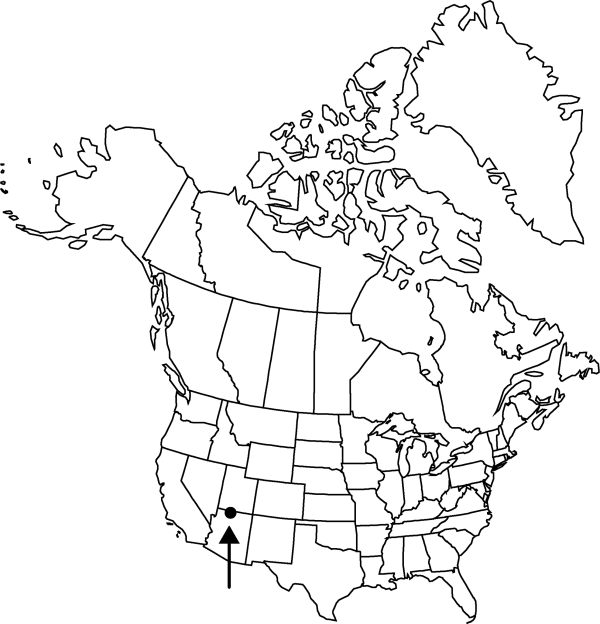Difference between revisions of "Pediocactus sileri"
Cact. Succ. J. (Los Angeles) 33: 53. 1961.
FNA>Volume Importer |
FNA>Volume Importer |
(No difference)
| |
Revision as of 22:23, 16 December 2019
Plants few branched or unbranched. Stems depressed-ovoid or occasionally elongate-cylindric, 5–15(–25) × 6–11.5 cm; areoles circular to pyriform, villous to lanate. Spines distinguishable as radial and central: radial spines 11–15 per areole, white, 11–21 mm; central spines 3–7 per areole, nearly porrect, brownish black aging to pale gray or white, straight or slightly curving at tips, 13–30 × 1 mm at base. Flowers 0.8–2.2 × 2–3 cm; scales long fringed; outer tepals brown with white margins, long fringed, 9–15 × 3–4.5 mm; inner tepals yellow with purple veins, 15–20 × 4.5–6 mm. Fruits greenish yellow, short cylindric, 12–15 × 6–9 mm. Seeds gray to nearly black, 3.5–5 × 3–3.5 mm, papillate and rugose.
Phenology: Flowering spring.
Habitat: Rounded hills in gypsum clay and sandy soils of Moenkopi Formation, Great Basin desert scrub
Elevation: 900-1600 m
Discussion
Of conservation concern.
Pediocactus sileri stems tend to develop a basal thatch of spines that anchor it to the fine, gypsum-rich soil. This species is endemic to a narrow strip along the Arizona-Utah border.
Selected References
None.
